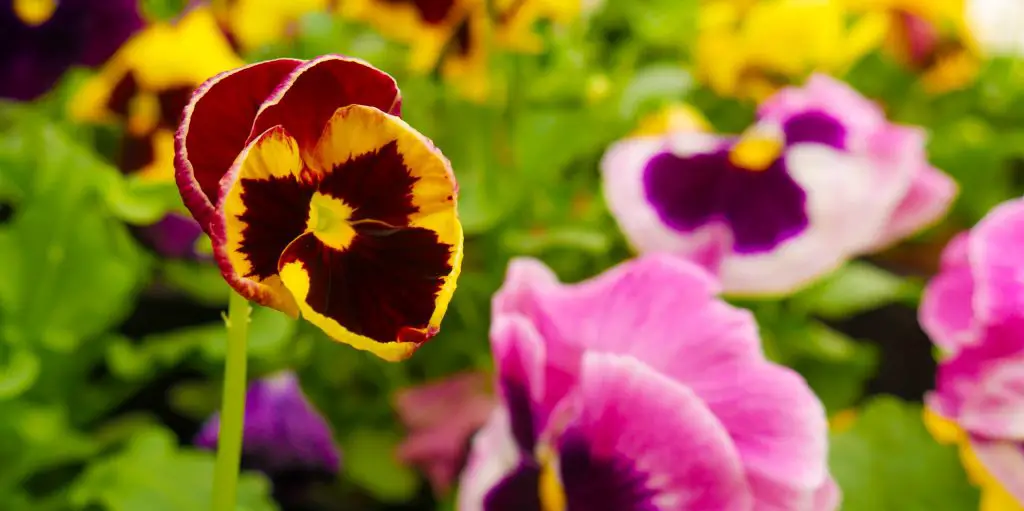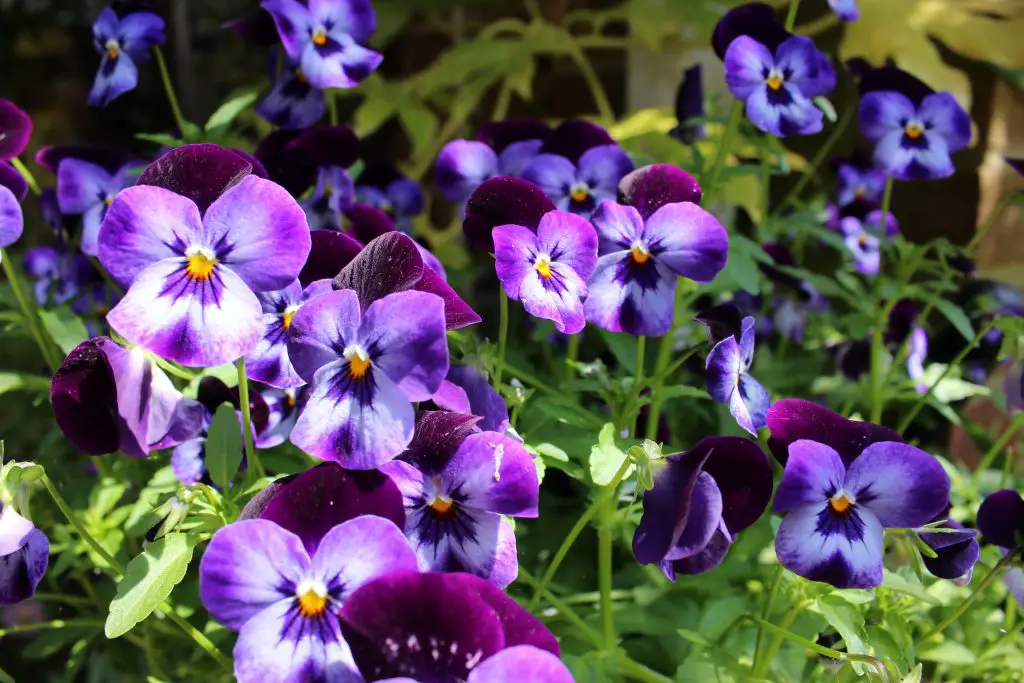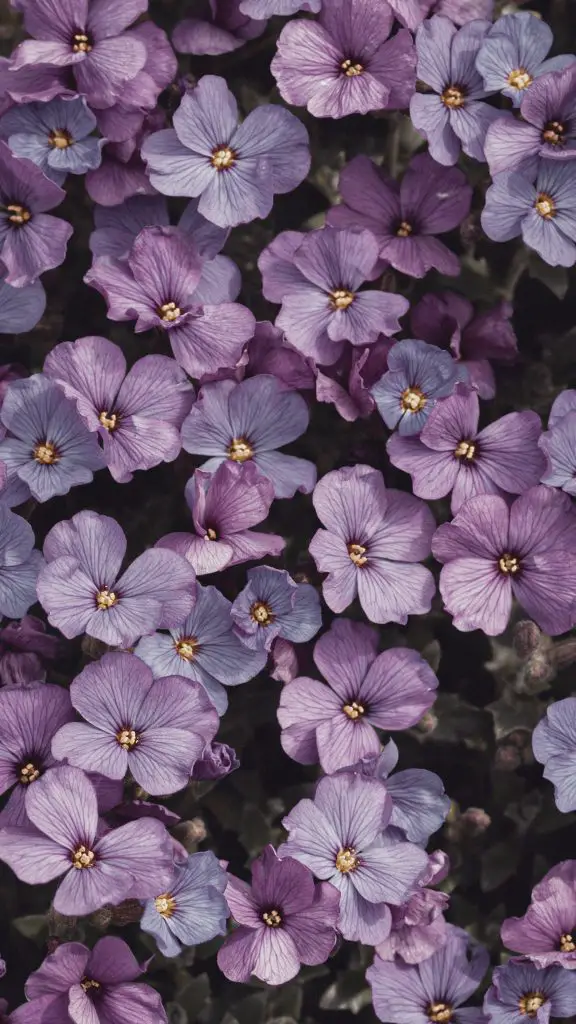Pansies are a popular garden flower that is beautiful and easy to care for which makes them one of the most commonly grown flower gardens in the country. These sweet little flowers grow so easily that they can be found almost everywhere: in backyards, town squares, and even as an ornamental plant on public roadsides. However, given that you see them all over the place you may also wonder do pansy spread? And are they invasive?
Pansies do spread to some degree because they self-seed relatively easily in your garden, however, they are generally not considered to be an invasive species that is hugely problematic. If you end up with too many pansies you can simply remove them from the garden bed before they flower and that will stop them from multiplying in subsequent years.
However, if you are very concerned about pansies spreading within your garden you can restrict them by growing in pots and in areas of the garden that are isolated away from other garden beds where the seeds can’t germinate.

How Do Pansies Reproduce and Grow?
As you may have guessed pansies grow from seed. They can thrive in rich, moist soil, but they are also happy in dry soil like that found in the rock garden. Pansies need full sun and must be watered daily since they do not have a root large system to draw moisture from the ground. This means that even when they are well-established they still require relatively frequent watering.
As mentioned earlier in the article pansies can spread quickly by being carried away by the wind Or getting caught up in animal dropping, however, this is the only way that pansies will spread.
Do Pansies Need To Be Deadheaded?
Pansies will flower in a range of bright colors for an extended period of time with blooms lasting for weeks and even months at a time. However, the plants will eventually begin to fade which is the ideal time to deadhead the plants.
The two main reasons for deadheading pansies are that, firstly, it will encourage the plant to produce more flowers throughout the season so it is a good method of ensuring that you have flower display occurring for as long as possible during the growing season. The second benefit of deadheading flowers just as they are fading is that you can prevent the spread of the pansies.
The seeds within the flower heads will often not be ripe until the flower has completely died back so by removing the seeds just as a flower is fading you will prevent the seed from being released into the garden and reduce the degree of self-seeding.

Where Is The Best Place To Grow Pansies?
One of the most common questions about planting pansies is where to plant them. Pansies will perform best when they are in a full sun location as that will encourage them to produce the greatest number of flowers. Ideally, you should also ensure that the level of competition in the area where you are planting the pansy is minimized so that the plants do not have to compete with the weeds for nutrients too much.
The plants should ideally be planted in rich, moist, and free-draining soil that has plenty of nutrients. If the location where you are planning to plant the pansies has relatively poor soil it is recommended that you add an additional bag of compost.
Once the plants are in the ground it is best to apply a layer of mulch that is 2 to 4 inches thick to ensure that the soil retains moisture for an extended period of time which will help with the health the plant.
How Long Will Pansies Survive?
Pansies are considered to be short-lived perennial plants and will usually live for approximately one to 2 years before needing to be replaced. However, the reality is that most people treat pansies as annual plants and replant seeds every single year. This is typically required in areas that have relatively cold winters.
The plant can survive single-digit temperatures in some cases but will start to deteriorate significantly once the temperature gets below 25F. In these conditions, pansies can only be treated as an annual plant.

What Month Do Pansies Bloom?
Pansies bloom in the late spring, which is when they broadcast their beautiful and fragrant flowers. They have colored flowers that are quite striking and these flowers give off a sweet fragrance of honey and clover, so you’ll find that many people love growing pansies for the smell alone. The best time to plant pansies is any time between March through September. If you want to grow them year-round, then it’s important to start right after their winter dormancy period ends. This way, they will be ready before the frost sets in your area.
Preparing Pansies For Winter?
If you want to try and get more out of your pansies and you live in a relatively moderate climate you may consider trying to overwinter the plants after they have finished flowering which typically is when the first frost arrives.
In cases where you have relatively cool temperatures, it is best to protect the soil around the plant by re-mulching as a method of insulating the soil from the worst of the winter weather. Additionally, you can also protect the seedlings by placing a row cover or cloche over the top of them which will give the pansies a relatively good chance of surviving the worst of the winter provided that it does not get too cold.
However, in those areas where the temperatures are absolutely extreme, it may be necessary to lift the pansies and transfer them into a pot and bring them indoors. To ensure that they maintain their vigor it is important that they have access to light and are placed in an area that will prevent the pot from freezing solid. Ideally, store the pot in a location that has a temperature just above freezing.
I hope you found this article useful and have great success growing your pansies at home in your own garden, if you have any additional comments or questions please leave them in the section below.
Relevant Articles
Can Snowdrops Be Purple or Blue? Or Is There A Similar Looking Flower?
Do Snowdrops Flower The First Year?
What Is The Difference Between Snowdrops And Lily Of The Valley?
Is Calendula The Same As A Dandelion?
